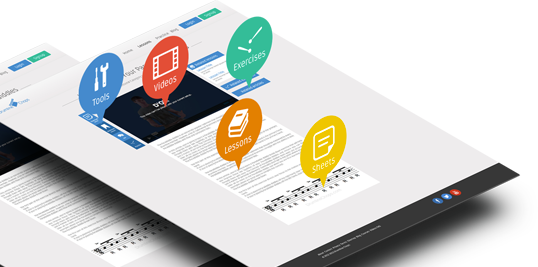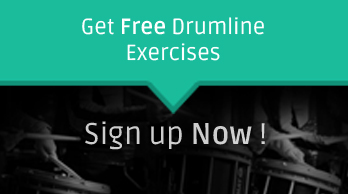
How many times do you play an exercise when you practice?
5 times? 10 times? 22 times?
Do you play each exercise enough? Do you play them at the right tempos? Do you have a reason for playing each exercise?
Many rudimental drummers can’t answer these questions with confidence. They respond with a hesitant, “yeah?” and then wonder why the questions were asked. What you can quickly learn by asking someone these questions is whether or not they are practicing with purpose.
But what’s the big deal about practicing with purpose? What’s the difference between normal practice and practicing with purpose? Practicing with purpose is the difference between mediocre results and amazing results. It’s the difference between “getting by” and complete mastery. Practicing with purpose is a habit that can take you from being intermediate to advanced. It’s what causes break throughs to happen and “Aha!” moments to occur. Practicing with purpose gives direction and momentum to your playing - it clears the fog, focuses the picture, and removes the chains that are holding you back.
But to understand what it means to practice with purpose, you must also understand what it means to practice without purpose. Practice without purpose is the all too common event where you pick up a drum pad and start playing stuff.
“Stuff” as in random exercises with no particular reason. “Stuff” as in hacking. “Stuff” as in old show licks that you skim through just to play something.
When you practice like this, you develop bad habits through carelessness and lack of attention. It causes you to develop more bad habits than good habits and leads you down a road of complacency or “good enough” syndrome. But if practicing like this is so bad for you…why do so many people do it?
Simple - they don’t know how to practice with purpose.
In order to practice with purpose you need to have a defined reasons for practicing. An “end goal” of sorts.
These goals give meaning and purpose to your practice session as you move forward and work towards meeting those objectives. Follow these simple steps each and every time you go to practice and you'll start to see better results:
1) Set Objectives Setting objectives is the first step to practicing with purpose. Objectives give you a destination to work towards. The biggest mistake that people make when setting practice objectives is being too vague. The general objective of practicing is “to get better.” That’s obvious so don’t say that’s the only reason you’re practicing. Instead, ask what needs to be better - what specific aspects of your playing do you need to improve to be a better rudimental drummer? Your answers should be something along the lines of, “I need to play with more definition between my accents and taps” or “I need to play with more control at softer dynamic levels.”
2) Set Purposeful Goals to Achieve Your Objectives After you establish your objectives you need to establish what the end goal is within that objective. What does the perfect version of that objective sound/look like to you? Hear or picture that perfect version in your head and use that model to compare where you currently are with where you need to be. What’s different? What are the biggest issues you need to correct in order to move you closer to that perfect version?
3) Plug Your Goals into the Rule of Three Take your goals from step two and plug them into the Rule of Three. The Rule of Three is an extremely simple yet effective practice technique that helps you plan your practice sessions for optimal results.
4) Think “I Can” Instead of “I Can’t” When you’re practicing new things, you’re going to face challenges. The truth about practicing is that it’s hard. But you’re capable of doing a lot so don’t sell yourself short - don't be the one who lets yourself down simply because you tell yourself you "can't do it" and then give up. Telling yourself that you can’t do something and giving up won’t get you anywhere. Always tell yourself that you can do it and try. Take steady steps no matter how small they are to move forward. It's perfectly okay to fail and try again, but don't give up just because you told yourself, "I can't."
5) Build Consistency As you practice towards your objectives, focus on building consistency. Finally being able to play with your ideal accent to tap ratio for one rep is great, but you can take your playing to a whole new level if you work on being able to do it every single rep you play. It takes time, but being persistent with it will pay off.
If you've been struggling with getting the practice results that you want, make sure that you're practicing with purpose. If you practice with purpose you're much more likely to see improved practice results. Take a few minutes right now to think of three things that you would like to improve in your own rudimental drumming. Once you have those three things, follow the steps above to create an action plan for practicing them. Work throughout the plan for a week and see how much of a difference you can make in your own playing by practicing with purpose. I'm willing to be you'll be pretty impressed.



Pat McLaughlin is the founder of Drumline Chops. He graduated from the University of North Texas with a degree in music education and is currently the percussion director at West Bloomfield High School.